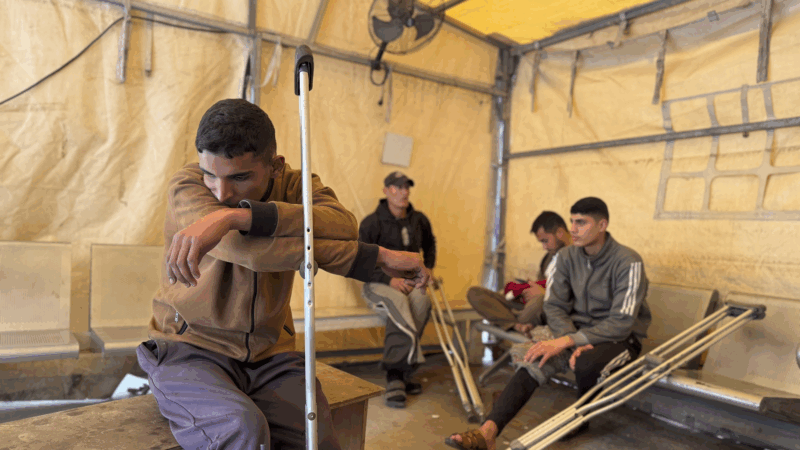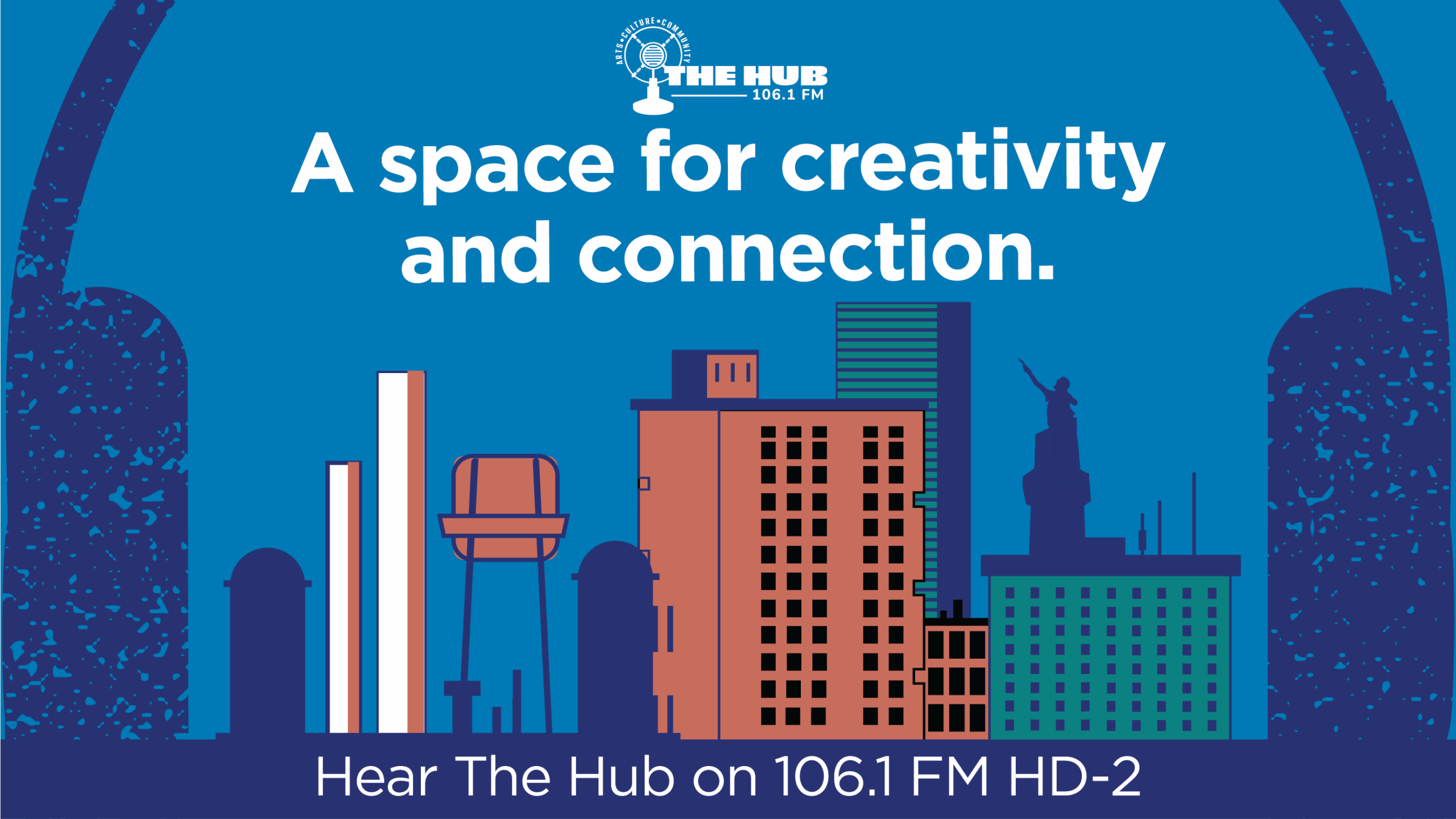This mother relies on SNAP to help feed her kids. Now, she’s bracing for cuts
Millions of people who use the Supplemental Nutrition Assistance Program (SNAP) are facing changes, not only to what kinds of food they can buy, but how much money they receive, what they have to do to be eligible for the program, or if they qualify for benefits at all.
The Trump administration last week allowed more states to stop people from using benefits to buy sugary food and drinks. And the budget reconciliation bill currently includes deep cuts to the program. Some say they cannot imagine how they will keep themselves and their families fed if these new proposals are approved.
“ It would start changing the calculation from ‘how do I make this stretch to meet my needs?’ to ‘how much food do I need to eat in order to survive?'” says Rook Smith, a graduating college student in Oregon who receives a little over $300 a month in benefits.
Smith does not receive family support and pays for college through a combination of loans and work — current SNAP rules require students to work 20 hours a week to receive benefits. One study estimated that nearly a quarter of undergraduate college students are food insecure.
“ Without it I would’ve had to make major changes, if not just drop out of college entirely,” Smith says.
Analysis from the nonpartisan Congressional Budget Office suggests the cuts would reduce SNAP by nearly $300 billion — the largest cut in the program’s history. More than 40 million people in the U.S. receive food assistance; some food policy experts warn 1 in 4 could be affected. They caution that many recipients would see their benefits reduced substantially or eliminated completely. Some states — unable to make up for the federal cuts — may choose to abandon the program altogether.
“It’s hard to overstate how devastating that would be to low income families” says Katie Bergh, a policy analyst at the Center on Budget and Policy Priorities. “ I think it has flown under the radar a little bit that the Congressional Budget Office — Congress’s nonpartisan, official scorekeeper — has confirmed that some states could end their SNAP programs as a result of this provision.”

For some, new work requirements may be formidable
The budget reconciliation bill passed by the House would impose new work requirements in order to qualify for SNAP. Among other changes, parents of children ages 7 and older would be required to work 20 hours a week to maintain eligibility.
“There’s no way,” says Tea Church, a single mom who lives in the rural town of The Dalles, Ore., about an hour outside Portland. Church has five children ranging in age from 10 to 18. “If the requirement was 20 hours a week, that would drastically, negatively impact our family.”
One of Church’s sons, whom she adopted after fostering, needs special care. “Chronologically he is 11,” says Church. “Socially and emotionally, he’s more like 6.”
Under current SNAP rules, some people qualify for an exemption from existing work requirements if they are caring for someone with a disability; it’s unclear if Church’s family would meet the requirements under the new rules.
She says finding child care for after-school and summer in her rural Oregon town is difficult and would be nearly impossible for a child with high needs.
“ It’s not that I don’t want to work or that I’m unable,” says Church, who quit a full-time job at a community college to care for her children. “ Working a regular job with a regular schedule isn’t an option for us.”
Her family’s current benefit is close to $450 a month, though it is increasing in the summer by $125 while her kids are home from school. SNAP she says, “is a huge part of what keeps us afloat every month.”
Soda and candy on the banned food list
Another flashpoint in the Trump administration’s rules around SNAP: sugar.
Last week, Secretary of Agriculture Brooke Rollins announced that three more states — Utah, Idaho and Arkansas — would be eligible for waivers that would allow them to ban the purchase of sugary foods and drinks with SNAP benefits.
“Disallowing taxpayer funded benefits to purchase unhealthy items like soda, candy and other junk food” is part of an effort to improve the American diet, Rollins said at a press conference.
Six states now have such policies; more than a dozen are pursuing them, primarily led by Republican state legislators.
Secretary of Health and Human Services Robert F. Kennedy Jr. said he would extend the ban to include ultra-processed food, though he acknowledged implementing such a policy would take time. Kennedy says these changes are part of a larger effort to mitigate chronic diseases such as obesity, diabetes and heart disease.
“If somebody wants to drink a soda pop, we have no problem with that, we believe that we have freedom of choice in this country,” Kennedy said at the same press conference. “It’s about nutrition and there’s no nutrition in these products. We shouldn’t be paying for them with taxpayer money.”
Critics — including food experts and SNAP recipients — say fighting disease is not as simple as creating a banned foods list.
On a recent shopping trip, Tea Church took several of her kids along with her. Her 11-year-old son, Solomon, pointed to the back of a cereal box and considered the balance of sugar and protein.
“Six grams and protein 9,” he said. “I think the protein should be more.”
Tea — who worked with a nutrition expert and lost over 100 pounds recently — says nutrition is important in their family, but she also values choice and the ability to give her kids an occasional treat.
“Being able to give them something that doesn’t negatively impact our budget is amazing,” she says.
For her teenagers, soda and energy drinks occupy a unique role. “It’s a kind of social currency for them,” she says.
Her 17-year-old daughter, Olivia, confirms this dynamic.
“ I feel like when you walk into first period in the morning, everyone has like a Red Bull, an energy drink — it’s a social construct for sure,” says Olivia.
Some of her peers come to school with Starbucks drinks that cost nearly $7 — a luxury she cannot afford. But having a Red Bull, she says, makes her feel more normal.
“I would never be able to be a part of that social pyramid if we didn’t have the SNAP benefits that would pay for those.”
Fewer choices for people with fewer resources
Some food policy experts stress there are meaningful ways to incentivize healthy eating, but proven strategies generally involve expanding benefits rather than just restricting them.
“ We do not have quality data that says that if you restrict access to candy and soda in SNAP, you are going to see improved diet quality, improved nutrition, reduced chronic disease,” says Joelle Johnson with the Center for Science in the Public Interest. “That data does not exist.”
Johnson cites successful pilot programs that encourage people to buy more fruits and vegetables through expanded access to these foods.
“ Just because somebody participates in SNAP doesn’t mean that they don’t deserve the same food choices that somebody who doesn’t participate in SNAP has,” says Johnson.
Some research suggests people who use SNAP drink about the same amount of soda as those who do not receive the subsidy.
Standing in the grocery store parking lot after her shopping, Church says she feels like the changes the administration is proposing don’t take into account the fundamental purpose of the program.
“That’s why these programs were created,” she says, “to be able to care for members of our community.”
Transcript:
MARY LOUISE KELLY, HOST:
More states are planning to stop people from using food assistance to buy soda and candy. Yesterday, the Trump administration added Utah, Idaho and Arkansas to the quickly growing list of states allowed to implement this policy. This on top of the proposed budget cuts to the program, the largest in history. NPR’s Katia Riddle talked to one family about how this might affect their lives.
KATIA RIDDLE, BYLINE: Meet Solomon Church (ph), 10-year-old nutritionist. He’s standing in the cereal aisle at the grocery store. He lives in a rural Oregon town called The Dalles. Solomon points to the sugar content on the side of one box.
SOLOMON CHURCH: Six grams and has protein, nine.
RIDDLE: Protein, he explains, is the most important ingredient – and vitamins.
SOLOMON: ‘Cause if you get something that doesn’t have vitamins, your body doesn’t grow.
RIDDLE: Solomon is here with his mom, T Church (ph). The family gets about $450 in benefits a month from the Supplemental Nutrition Assistance Program, or SNAP. The administration says this ban on soda and candy will help reduce chronic disease and improve nutrition. T says, nutrition is important in their family, but so is being able to give her kids choices and being able to buy some special treats.
T CHURCH: And so for some kids, it’s, like, the most meaningful way that they feel love and connection. And so being able to give them something that doesn’t, like, negatively impact our budget is amazing.
RIDDLE: She’s a single mom to five kids. Her oldest are in high school. T says, for them, soda and energy drinks have a special role.
CHURCH: I think it’s kind of social currency for our teenagers.
RIDDLE: T’s oldest daughter, Olivia Church, wasn’t at the store, but on a phone call, she says her mom is right. At her school, some kids arrive in the morning with $7 Starbucks drinks. She can’t afford that, but because of SNAP, she can afford Red Bull. She says walking into the first period with one in her hand helps her feel normal.
OLIVIA CHURCH: You know, I would never be able to be a part of that social pyramid if we didn’t have the SNAP benefits.
RIDDLE: The administration argues taxpayers shouldn’t be subsidizing unhealthy food and beverages, but paying for energy drinks is a minor problem compared to another obstacle this family could be facing. As part of the effort to cut the program, the current bill imposes work requirements. T Church would have to work 20 hours a week to keep her benefits.
CHURCH: As a sole provider, there’s no – yeah, there’s no way that – if the requirement was 20 hours a week, that would drastically negatively impact our family.
RIDDLE: This rule would apply to families with kids over the age of 7. One of her sons needs a lot of special care. It’s possible she could qualify for a disability exemption, but that’s unclear.
CHURCH: Because even though chronologically, he’s 11, social, emotionally, he’s more like 6.
RIDDLE: T says SNAP benefits are critical to getting through this time in their life.
CHURCH: And it’s not that I don’t want to work. It’s not that I’m unable. It’s – we live in such a rural community and his needs are so significant, and care out here for a child like him is virtually impossible.
RIDDLE: There are more than 40 million people on SNAP. Experts say as many as 1 in 4 recipients could be affected. It’s possible some states would end the program altogether rather than try to make up for the cuts. T says she thinks efforts to curtail SNAP don’t take into account the fundamental purpose for programs such as this one.
CHURCH: It seems like they were created to be able to care for members of our community.
RIDDLE: Caring for people, says T Church, by making sure everyone has enough food. Katia Riddle, NPR News, The Dalles, Oregon.
(SOUNDBITE OF MUSIC)
Sunday Puzzle: Pet theory
NPR's Sacha Pfeiffer plays the puzzle with KAMW listener Daniel Abramson of Albuquerque, N.M, and Weekend Edition Puzzlemaster Will Shortz.
Venezuela’s exiles in Chile caught between hope and uncertainty
Initial joy among Venezuela's diaspora in Chile has given way to caution, as questions grow over what Maduro's capture means for the country — and for those who fled it.
Inside a Gaza medical clinic at risk of shutting down after an Israeli ban
A recent Israeli decision to bar Doctors Without Borders and other aid groups means international staff and aid can no longer enter Gaza or the West Bank. Local staff must rely on dwindling supplies and no international expertise.
Iran warns US troops and Israel will be targets if America strikes over protests as death toll rises
Iran's parliament speaker warned the U.S. military and Israel would be "legitimate targets" if America strikes the Islamic Republic, as threatened by President Donald Trump.
Bob Weir, guitarist and founding member of the Grateful Dead, has died at 78
For three decades with the Grateful Dead and three more after the group ended following the 1995 death of his bandmate Jerry Garcia, Weir helped build and sustain the band's legacy across generations.
Nationwide anti-ICE protests call for accountability after Renee Good’s death
Activist organizations are planning at least 1,000 protests and vigils this weekend. Officials in major cities cast Saturday's demonstrations as largely peaceful.







